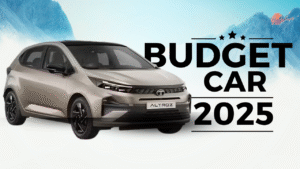As electric vehicles (EVs) become increasingly popular across India, Delhi-NCR is emerging as one of the fastest-growing EV hubs. But beyond showroom range claims and flashy tech specs, real buyers need to know one thing—how do these EVs actually perform in daily traffic, heat, and road conditions?
In this article, we conduct a real-world performance and usability test of two of India’s most affordable electric cars: the Tata Tiago EV and the MG Comet EV. We tested them across urban congestion, expressway runs, and charging points within Delhi, Noida, Gurugram, and Ghaziabad to see which one holds up better for the budget-conscious EV commuter.
The Contenders: Tiago EV vs MG Comet EV
| Feature | Tata Tiago EV (Long Range) | MG Comet EV |
|---|---|---|
| Battery | 24 kWh | 17.3 kWh |
| ARAI Range | 315 km | 230 km |
| Real-World Tested Range | ~225–240 km | ~155–165 km |
| Charging Time (0–80%) | ~57 mins (DC Fast) | ~60 mins (DC) |
| Price (Ex-Showroom) | ₹10.19 lakh (LR) | ₹7.98 lakh |
Morning Rush Test: Inner Delhi to Gurugram (35 km)
Traffic Density: High
Weather: 39°C, AC ON
Usage: Stop-go traffic, AC and infotainment use, regenerative braking
- Tiago EV: Used ~17% battery, indicated 245 km remaining
- Comet EV: Used ~24% battery, indicated 140 km remaining
Observation:
The Tiago EV’s regenerative braking and larger battery offered better range management in heavy traffic. The Comet EV felt zippy and maneuverable, but the battery drained faster with AC use.
Expressway Run: Gurugram to Greater Noida (via DND – 55 km)
Speed: 65–90 km/h
Mode: Normal
Payload: 2 adults, 1 child, luggage
- Tiago EV: Smooth acceleration, stable at 80+ km/h
- Comet EV: Good till 70 km/h, struggled slightly at higher speeds
Range Drop:
- Tiago EV: ~21% drop for 55 km
- Comet EV: ~30% drop for same distance
Winner: Tiago EV, clearly more highway-capable.
Charging Infrastructure Experience (Noida & Ghaziabad)
Both vehicles were tested at Tata Power, Ather Grid, and ElectreeFi stations.
| Parameter | Tiago EV | Comet EV |
|---|---|---|
| Port Compatibility | CCS2 | Type2 / Fast AC |
| Charging Time (20%–80%) | 42 mins | 50 mins |
| Network Issues | None | Slight compatibility issue at one station |
Observation:
Tata’s charging network is more mature. Comet EV owners may face limitations with charger availability depending on the region.
Comfort & Cabin Experience
Tata Tiago EV:
- Traditional 5-door layout
- Feels like a “real car”
- Touchscreen + Android Auto/Apple CarPlay
- Strong AC performance
MG Comet EV:
- Unique, compact 2-door design
- Spacious for 2 adults, tight for 3
- Smart screen integration with floating dual display
- Quieter cabin, great urban visibility
Real-World Range Summary (Delhi-NCR Use)
| Driving Condition | Tiago EV | Comet EV |
|---|---|---|
| City with AC (avg) | 220–240 km | 150–165 km |
| Mixed (City + Highway) | 200–215 km | 130–145 km |
| Pure Highway | 180–190 km | 110–120 km |
Which One Should You Buy?
If your daily driving involves
- Highway and urban use
- Trips over 100 km/day
- Need for 4+ seats and boot
✅ Go for the Tata Tiago EV (Long Range). It feels like a full-fledged car, handles well on highways, and supports fast charging networks more widely available in NCR.
If your usage is
- Purely city-based
- 30–40 km daily commutes
- You want easy parking and a futuristic cabin
✅ The MG Comet EV is an affordable, trendy option. Perfect for young professionals, college goers, or urban-only travel.
Final Words
EV adoption is growing rapidly in Delhi-NCR, but real-world performance should guide your purchase—not just ARAI figures. In our tests, the Tata Tiago EV proves to be more versatile, while the MG Comet EV excels at being ultra-compact and city-smart.
Both offer zero tailpipe emissions, lower running costs, and unique value—but your choice should depend on how and where you drive.










